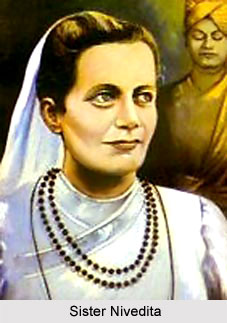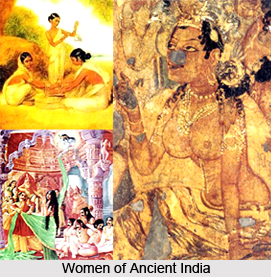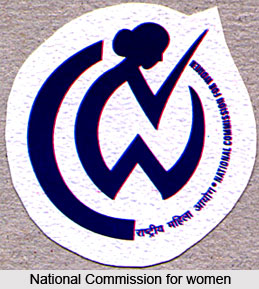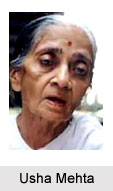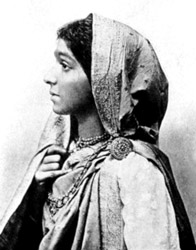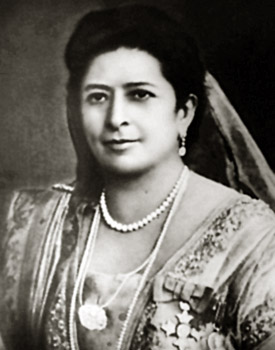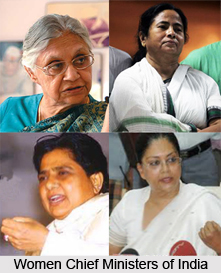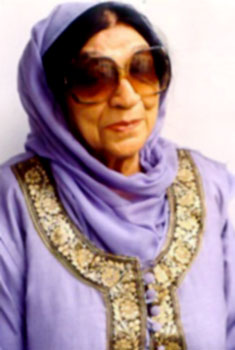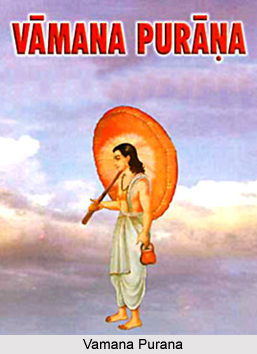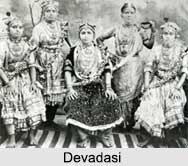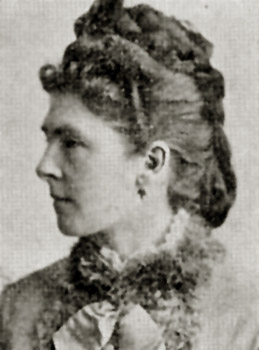 Women`s employment under British rule has largely remained hidden from history. There are hardly any books or memoirs that provide detailed information on the kind of work that woman were employed in under British rule. However, a broad analysis of the subject does throw some light on women`s employment in colonial India. In 1921 over thirty-nine million women or one-third of the female population were in the workforce. However, very few of these women were professionals.
Women`s employment under British rule has largely remained hidden from history. There are hardly any books or memoirs that provide detailed information on the kind of work that woman were employed in under British rule. However, a broad analysis of the subject does throw some light on women`s employment in colonial India. In 1921 over thirty-nine million women or one-third of the female population were in the workforce. However, very few of these women were professionals.
Women`s new professional opportunities as well as their employment in urban brothels were a consequence of British domination. Colonial rule transformed the traditional economic system and in the process altered the non-agricultural, village-based economy. The decline of the local economy and with it the death of local small-scale services and industries left many women unemployed. Women had formerly participated in a wide range of small-scale enterprises. They processed food grains and oil seeds, made bread, shoes, pottery, nets and ropes, raised cattle, and repaired various things. All these activities declined. In Bengal the female-dominated household industry of rice-husking was replaced by mechanized threshing machines placed in mills. When machines were introduced, men replaced women as rice-huskers. The new mills allocated menial jobs to women but norms of female seclusion prohibited Bengali Hindu and Muslim women from accepting this employment.
The modern sector, the economic sector that emerged with colonial rule, provided women with new opportunities for employment. For example, the professions of teaching and medicine were now open to a few women. Factories, mines, and plantations employed significant numbers of women. However they were employed under such harsh and difficult conditions that it is difficult to view this employment in a positive light.
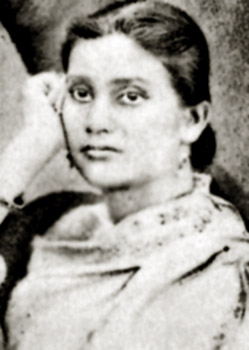 Poor women often found employment in exploitative industries. Women leaders ignored this reality, focusing instead on education, the franchise, and legal rights. They regarded women from the higher castes who sought employment as victims of unfortunate circumstances. The work of lower-caste women was taken for granted. Women leaders could afford their excursions into social work and politics because they had supportive fathers and husbands. But they lacked the economic resources to make independent decisions. As a result of this they were trapped in a behavioural system that maintained the class status.
Poor women often found employment in exploitative industries. Women leaders ignored this reality, focusing instead on education, the franchise, and legal rights. They regarded women from the higher castes who sought employment as victims of unfortunate circumstances. The work of lower-caste women was taken for granted. Women leaders could afford their excursions into social work and politics because they had supportive fathers and husbands. But they lacked the economic resources to make independent decisions. As a result of this they were trapped in a behavioural system that maintained the class status.
Professional Positions occupied by women under British Rule
In the 1920s and 1930s women`s organizations demanded educational and medical services for females. Separate institutions were required to deliver these services because sex-segregation norms prevented women from using institutions designed for men. Women leaders insisted that the new institutions should be staffed by female professionals. The jobs created were for women much like themselves- educated, able to move about freely, and comfortable interacting with both men and women. There were only 68,000 medical professionals, 30,000 women employed in educational and scientific fields, and 6,000 women in law and business.
Women in Medical Field
Medicine was one of the new careers opened to Indian women in the late nineteenth century. Western medical training had long been available to Indian males but it was not until 1885 that Lady Dufferin, wife of the Viceroy, established the National Association for Supplying Female Medical Aid to the Women of India or the Dufferin Fund. A number of women came to be successfully employed in the medical profession. These include Kadambini Basu, one of India`s first women doctors and a beneficiary of the Dufferin Fund; Anandibai Joshi, a Marathi woman who also received her medical degree in 1886 and others. Christian women were always more numerous in the medical profession than women from other communities. Hilda Lazarus, born in Vizagapatnam (now in Andhra Pradesh) in 1890, was one of the most successful Indian Christian doctors.
In the late nineteenth century and the early decades of the twentieth century, demand for women medical professionals grew. This demand came from middle-class Indian women, the manufacturing sector providing medical aid to its employees, and the government who demonstrated their "civilizing mission" by establishing clinics, hospitals, and dispensaries. The supply of trained medical women never equalled the demand.
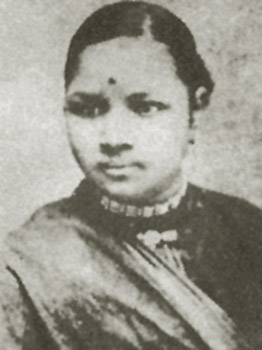 After World War I, in direct response to the demand for women doctors, scientific subjects were added to the curriculum in women`s colleges and more medical colleges accepted women candidates. By 1929 nineteen men`s medical colleges and schools admitted women, and there was one medical college and four medical schools for women only. Attending a men`s medical college was a major challenge which the women had to face due the various conditions and rules of society and their upbringing. Commuting to and fro and being part of a minority in the class were among some of the problems they had to face. Even in their careers they had to face a number of challenges such as balancing family and professional life, sexual harassment etc.
After World War I, in direct response to the demand for women doctors, scientific subjects were added to the curriculum in women`s colleges and more medical colleges accepted women candidates. By 1929 nineteen men`s medical colleges and schools admitted women, and there was one medical college and four medical schools for women only. Attending a men`s medical college was a major challenge which the women had to face due the various conditions and rules of society and their upbringing. Commuting to and fro and being part of a minority in the class were among some of the problems they had to face. Even in their careers they had to face a number of challenges such as balancing family and professional life, sexual harassment etc.
Women in Teaching and Law
Women entering the professions of teaching and law faced similar problems to those of medical women. Obtaining requisite training was often difficult as was the problem of certification. Many women studied privately for exams. They were less likely to hold the degrees and certificates necessary for employment in formal institutions. Women like Cornelia Sorabji had attended the proper institutions and passed the required exams but could not practice law because of gender discrimination.
Women in Manufacturing Industries under British rule
By far the largest employer of women during this time was the manufacturing sector, both in established mills and factories and in minor manufacturing such as vegetable oil production and tailoring. Domestic workers numbered 737,000. In 1928 about 250,000 women worked in factories, about 58,000 of them in cotton mills and 55,000 in jute mills. Another 250,000 women worked in tea gardens, where they were 27 percent of the workforce, 78,000 women worked in the mines.
Women in Factory Work
The first cotton and jute mills, established in the 1850s, employed women, but accurate records are available only after 1911. It is estimated that approximately 100,000 workers were employed in Mumbai textile factories in the 1890s. Twenty to twenty-five percent were women, three-quarters of whom worked full-time with the remainder employed seasonally or whenever production accelerated. Women worked cleaning cotton and winding and reeling thread but never as weavers. There were about 14,000 women working in the jute mills of Bengal at this time. They too performed unskilled tasks and were subject to seasonal unemployment. During the last quarter of the nineteenth century factory legislation, designed to improve working conditions for women, received attention from many quarters. Despite local hostility to legislation, India had its first Factory Act by 1881. An 1891 amendment limited women to an eleven-hour day, and a 1911 Act prohibited women from working at night.
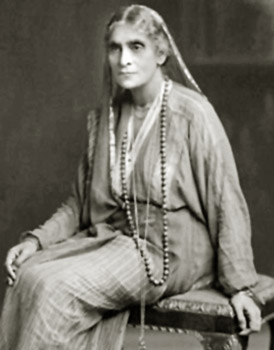 In Kolkata the jute mills in the 1920s employed approximately 66,000 women, about 20 percent of the total number of workers. Women spun and carded jute and finished the jute sacks but they did not work on the jute presses. Hindu and Muslim Bengali women, their work performance hindered by restrictions of the Purdah system, accounted for only 10 percent of the female jute workers. Ninety percent of the female workforce was migrant women from Bihar, the Central Provinces, Chennai and the United Provinces. They toiled in the mills for three times the wages of the Bengali women who did piecework within their homes. The decline of female employment in the jute mills, related to increased mechanization and the imposition of labour legislation, was discernible from 1930.
In Kolkata the jute mills in the 1920s employed approximately 66,000 women, about 20 percent of the total number of workers. Women spun and carded jute and finished the jute sacks but they did not work on the jute presses. Hindu and Muslim Bengali women, their work performance hindered by restrictions of the Purdah system, accounted for only 10 percent of the female jute workers. Ninety percent of the female workforce was migrant women from Bihar, the Central Provinces, Chennai and the United Provinces. They toiled in the mills for three times the wages of the Bengali women who did piecework within their homes. The decline of female employment in the jute mills, related to increased mechanization and the imposition of labour legislation, was discernible from 1930.
Women in Mines
By the mid-1920`s more than one-third (approximately 80,000) of all mine workers were women working above and below ground. In the Central Provinces women were 56.6 percent of all mine workers and 47 percent of those working underground. In Bengal 35 percent of all mine workers and 34 percent of all underground workers were women. In Bihar and Orissa women were only 30.9 percent of the total mine workforce but 39 percent of the underground workers. In these mines, it was observed that women were in poor health, worn out by double work, and relying on opium to keep their children quiet. Women worked in the mines because they needed money and preferred working with their husbands to being left behind in their villages. Moreover, finding alternative work for women miners was not easy.
Regularisation of mine conditions began at the turn of the century, but it was not until the 1920s that questions were raised about the employment of women below ground. When framing what was to become the 1923 Mines Act, the government asked the Mining Boards, the Mining Federation, and local governments to give their opinions on this issue. The regulations of 1929 excluded women from working underground except in exempted areas including Bihar, Bengal, Orissa, Central Provinces, and the salt mines of the Punjab.
The lives of India`s working women deteriorated under colonial rule. Jobs in the modern sector did not make up for the decline of traditional industries for either men or women, but women suffered the greatest loss. Because labour was plentiful, women continued to work in the unskilled, un-mechanized sector where they were poorly paid and unlikely to advance to better positions. The new professions open to women - teaching, law, and medicine-required education and family support. Nevertheless, it must be recognised that there were professional women who gained respect, independence, and personal satisfaction. Especially significant for the history of women in India is the fact that most of these new professional women worked with women and contributed to the development of new educational and medical institutions. These institutions have, in turn, made it possible for middle-class females to attend schools and colleges and enter a wide range of professions in contemporary India.
